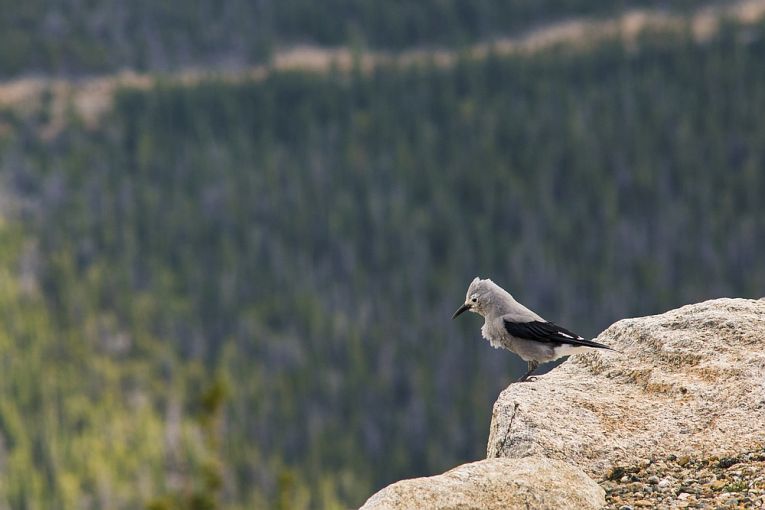Clark’s nutcracker image; Credit: © Shutterstock
The Condor: Ornithological Applications
is not a journal we have come across before. In a review by Mario Pesendorfer and his co-authors from the University of Nebraska-Lincoln and the Smithsonian Migratory Bird Center, Cornell Lab of Ornithology and The Nature Conservancy,US., it is not condors, but corvid birds that are held up as invaluable members of the forest community. (We have to say at this point that ravens seem to be responsible for the decline of Andean condors because they prey on the young.) As climate change begins to attack all of us the fact remains that most ecosystems seem to be fragmented beyond any reasonable capacity. For a group of birds to be employed as forest ecosystem engineers is not a novel idea. In 1653, crows were well recognised as hoarding acorns, while by 1889, it was recorded as unnecessary to seed oaks, because jays do so in abundance.
Mario clams the aerial dispensing of seeds over long distance s becoming much more important because of climate change and the ways we have encouraged fragmentation of forest habitat. Quercus spp. (oaks) and Pinus are keystone species
in the system. They provide the habitat for so many animal and plant species, the corvids act as forest managers, especially after fires or where clearings emerge. Birds then place their seed hoards in such areas, encouraging vast, entirely-unaided regenerations. The cost-effectiveness for us cannot be improved upon!
This seed scattering process by crows and their allies is called scatter-hoarding. The ecosystem service emerges as sheer maintenance under normal circumstances, but we are far from any normal situation. The claim is that we can even manipulate certain species to deposit seeds at special target areas. Using ecological silviculture techniques in eastern Germany, great oaks are conserved so that thinned forest areas can be recolonised by seedlings planted by jays. Such efficiency (ie. there is little or no cost) produces between 2,000 and 4,000 oaks / hectare-1. The only extra needed would seem to be a large basket of acorns offered as insurance in case the workers become forgetful.
For public areas the Swedes have used the same species in their renowned urban forests to save an annual $9,400/ hectare-1. The Spanish have reported using a habitat islet of oaks since 2008 to attract scatter-hoarders. What is certain is that jays prefer to forage within forests and store them outside that habitat. Culling such bird species is of course probably the most negative process that has been used in efforts to improve
habitat.
In North America, Pinus albicaulis has a rust problem and a pine beetle infestation to combat. It is key to the ecosystem in the Rockies and foresters see Nucifraga columbiana (Clark’s nutcrackers) as the major seed dispersers. Where the pests have affected trees, the birds forage less often, so enhancements have been offered. Resistant tree seed is being propagated so that hopefully the nutcrackers will work with the future seed production and disperse it successfully. Pine woodland and oak chaparral in the Channel Islands of California would also benefit from the scatter-hoarding activity of the very rare scrub jay, Aphelocoma insularis. (there are only 3,000 of them)150 years of indiscriminate livestock grazing leaves these small islands in dire straits. The endemic and very range-restricted bird is certainly best suited to aiding the regenerations required, according to a faster expansion of vegetation on those islands that still have the bird. Each individual has been estimated dispersed 4,500 acorns. That is 7 million potential trees, folks!
It seems that mutualism rules. However corvids and trees interact, that ancient combination seems assured to work in favour of the ecosystem. We now seem to have come round to working with the systems rather than against. That means there is some hope for these widely-separated forests if we use corridors and species related to their systems to help maintenance and regeneration.
The review can be referenced here as Scatter-hoarding corvids as seed dispersers for oaks and pines: A review of a widely distributed mutualism and its utility to habitat restoration
For a wider view of corridors in the southern hemisphere and elsewhere read up on this mongoose lemur and its plight in Madagascar, alongside the need for regeneration in many other rainforests.















